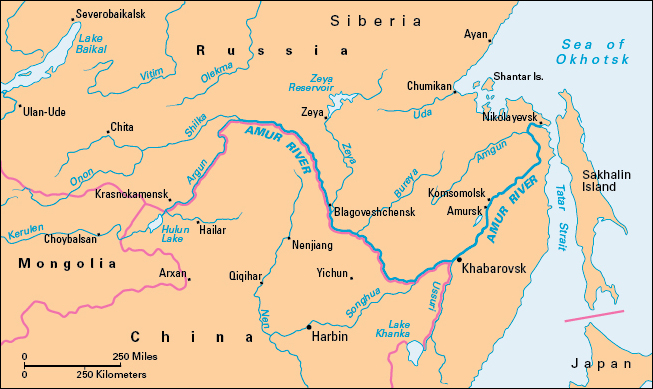Amur, << uh MOOR, >> River is a huge river in eastern Siberia, formed by the joining of the Argun and Shilka rivers. The Amur-Argun river system is about 2,760 miles (4,440 kilometers) long.
The Amur flows east along China’s northern border and then turns north into the Khabarovsk region of Russia. It empties into the northern Tatar Strait, a narrow band of water separating Sakhalin Island from the east coast of Siberia. The valleys of the Amur and its branches cover about 716,000 square miles (1,855,000 square kilometers). These branches include the Ussuri, Sungari, Zeya, and Bureya rivers. Large dams have been built on the Zeya and the Bureya. The Amur becomes wide in the Khabarovsk Region, and it often floods there during the summer monsoon season.

Large boats operate on the Amur for most of its length from April to November. The cities of Khabarovsk and Komsomolsk stand on the banks of the Amur. Railroads link both cities with the port of Vladivostok to the south. Komsomolsk is the major eastern end of the Baikal-Amur Mainline railroad.
